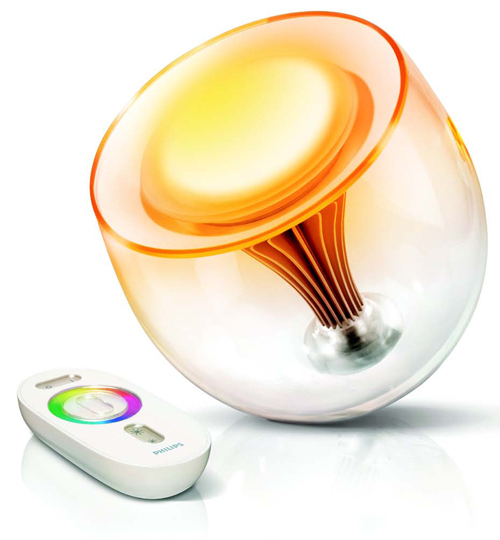There are several products in the market exemplary of these properties. Quite recently, Cree reported a record efficacy of 231 lm/W for a white, power LED. As per company reports, the LED efficacy was measured using a single-die component at a correlated colour temperature of 4500 Kelvin, standard room temperature and 350mA testing.
Sharp Corporation has also introduced high-output, high-colour-rendering 25W-class LED lighting devices that feature a high luminous efficacy of 91 lm/W, a luminous flux of 2370 lm and a high colour rendering index (CRI) of 83. These devices have also achieved incredibly low energy consumption through the adoption of LED chips and phosphor, both of which have excellent high-temperature properties. They are well suited for use in product display spotlights in stores.
OSRAM Opto Semiconductors, a leading technology-driver in the LED market, has launched its high-current UX: 3 chip technology. The next-generation thin-film indium gallium nitride (ThinGaN) chip technology used here makes LEDs capable of handling high currents. “Normally, the efficiency of high-power LEDs reduces as the operating current increases. The greater the volume of the active chip area, the weaker the effect. This is where UX: 3 chip technology comes in, reducing the current density in the multi-quantum well structure. The result is a high-power LED with high current capability for high-power applications—mobile flash, projection and, of course, general lighting applications,” explains Dr Michael Fiebig, director-marketing and business development, OSRAM Opto Semiconductors.
‘Brilliant-Mix’, another key concept from OSRAM, stands for a 30 per cent greater luminous efficacy with a high CRI too. The intelligent colour mix, based on Oslon solid-state lighting (SSL) LEDs in EQ-White and Amber, covers a broad white spectrum from 2700 to 4000 K. It also offers warm white light with a high luminous efficacy (110 lm/W) and a colour rendering index of more than 90.

Looking ahead, Chereddi comments, “Significant technological challenges remain to be solved in order to achieve the cost and performance target set by the industry to enable adoption of LEDs for a large number of applications. Solving the high current efficiency drop remains a priority. Thermal management remains the main challenge, impacting device lifetime, stability and limiting driving currents. The development of new phosphors is also critical in achieving high efficiency and bringing colour consistency, stability and rendering at the levels requested for general lighting applications.”
Size is reducing
Today’s LEDs are much smaller in size as compared to a year or two ago. Single-die miniature LEDs, which are nothing but a single chip with a connecting wire, are commonly available. This reduction in size can be attributed to improvements in fabrication technology.
“A few years ago, the size of an LED was two to five millimetre, that too in lead mounting. These were used mainly as signal indicators. Now, LEDs are available in surface-mount device (SMD) packaging, and we have multiple LEDs in one small package. The size of a package consisting of three LEDs is no more than five millimetre. These three LEDs may be of the same colour or of different colours. By changing the colour intensity of each LED in one package, we can generate the required true colours. So, such a tiny package can replace a pixel on an LED screen,” remarks Dr Anita Agrawal, assistant professor in the department of electrical and electronics engineering, BITS, Pilani-K.K. Birla Goa Campus.
Solid State Supplies’ small footprint 40W RGBW LED emitter is an example of the reducing size of LED components. The LZC-00MD40 RGBW LED emitter has a high light output, high flux density and superior colour mixing. It offers twelve red, green, blue and white LED dies in a single, compact emitter. With 40W power capability and a 9.0×9.0×5.4mm³ ultra-small footprint, this package provides exceptional luminous flux density, producing 2000 lm in daylight white or 1500 lm in warm white.
One step ahead, UK-based E-wave, a maker of tailor-made LEDs, claims that with the latest fabrication and packaging technologies as small as 50×50µm² LED chips can be made with even smaller emitting areas. These can be provided as chips or packaged LEDs. The chips can be mounted on small ceramic (or silicon) sub-mounts, and then encapsulated in plastic for applications that require package foot-prints smaller than two millimetre.
To understand the reason behind the reducing size of LEDs we should remember that an LED is both an electronic and an optic device. It is almost like a little chip. So, as semiconductor fabrication technology improves, the size of LEDs also reduces. In fact, semiconductor fabrication affects many aspects of LEDs—right from size to the price (volume manufacturing at low costs).






